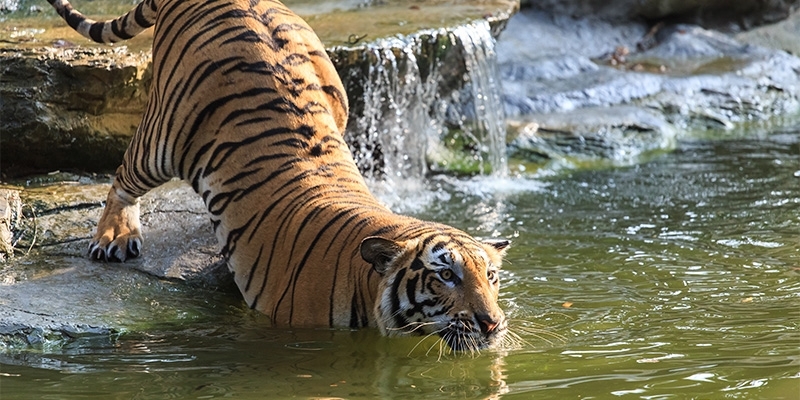Discover Royal Wildlife Sundarbans Adventure in India
An unforgettable adventure into the heart of Sundarbans in India, where the majesty of royal wildlife awaits. Explore the world's largest mangrove forest and discover its rich biodiversity, from elusive Bengal tigers to exotic birdlife. Join us for an immersive experience in nature's kingdom in India. Know more
Wildlife Tour in Sunderbans
The biggest mangrove woodland in the world is a mist-covered, river-puzzled swamp region of moving tides, man-eating tigers and never-before adventure. It’s time to explore Sundarbans.
Shared roughly between India and Bangladesh, you can either of the routes to make an entry. Despite being located such a rich region, the place is largely remote, desolated and uninhabited by people. This is extremely wild terrain, and chug-chugging along its river tributaries into its marshy core of dusk is as thrilling as it is quiet.
Thick mangrove forests, riverine stations, wildlife preserves, and reserved regions constitute the Sundarbans. A vast area within the region forms the Sundarbans Tiger Reserve, and at its base lies the UNESCO World Heritage Site of the Sundarbans National Park. Enter the national park from the Sajnekhali Wildlife Sanctuary on Sajnekhali Island.
Why visit Sundarbans?
The biggest attraction of this place is the Royal Bengal Tiger. You would be shocked to know that their quantity here is not less than 400, making the single largest population of tigers on this planet. In spite of their standing as man-eaters, they are highly difficult to find, but the adventure of finding the one is totally unmatched. And even if you see none, just sitting on the deck of your boat as you drift through thick mangrove forests is an amazingly wistful experience.
Though you can reach there through either India or Bangladesh, it has been noted that the Indian side is more accessible. However, Bangladesh offers the opportunity to discover the place in more depth.
Where you can spot the tigers?
Nearer to the seashore, saltwater crocodiles prowl in the boggy creeks. Since the largest living reptiles in the world, they can be surprisingly easy to miss as they merge flawlessly with the mudflats. As you cruise the waterways, keep your eyes unwrapped for the threatened Irrawady and Gangetic river dolphins, and the widespread river terrapin, once on the edge of extermination. Marine turtles like the Olive Ridley arrive at the nest on unoccupied sea-side islands. Browse through the rocks and riverbanks for scurrying horseshoe crabs and ideally the cloaked King Cobra and Indian python. Check on wild boar, spotted deer and monkeys within the copses of the jungle.
Bird’s feather
Scan into the skies and crowns to find more than 200 classes of avifauna, attached by the enriched foliage and waterways. Innate cormorants, public redshanks, and white storks dwell the region, along with whistlers, orioles, herons, egrets, and the white ibis. During winter, the region gets flooded with migratory birds from colder regions, including species of the sandpiper and curlew, the white-eyed poachard, and whistling teal.
Find near the watchtowers
Watchtowers mark the region, and boats lie here for travelers to come ashore and discover the surroundings from an easy point. The watchtower at Sajnekhali is the most prevalent one here in the region, due to its close proximity to lodging facilities. From here, examine the branches for kingfishers and white-bellied sea eagles. Don’t forget to hop on to the island’s Mangrove Interpretation Centre, for details on the immediate vegetation, and settings.
Spotting a tiger becomes quite easy near the Sudhanyakhali watchtower. Visit the pond in its vicinity, a regular watering hole for various animals. Take a walk across the bounded walkway of the Dobanki watchtower for an astounding aerial view of the forest.









